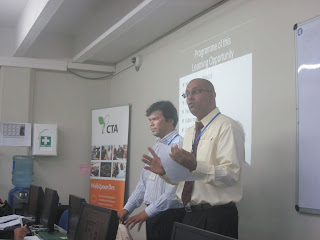 |
| Industrial Broiler Production |
Introduction
Broilers are chicken (Gallus gallus domesticus) bred and raised specifically for meat production. Chickens are one of the most common and widespread domestic animals, and although the global population has decreased from more than 24 billion in 2003 to 19 billion in 2011, there are more chickens in the world than any other species of bird. Mauritius imports about 90 000 day-old parent-stock out of which 90% are of the broiler type
Broiler production is the raising or keeping of chickens (broilers) primarily for meat production. The key to successful broiler production depends on a systematic and efficient management program the farmer has adopted. In addition, it is advisable to do proper planning and preparation well on time for the arrival of chicks on site.
The Broiler Production Cycle
Day old chicks are bought locally and raised for 6 weeks after which the chicken houses are cleaned, disinfected and allowed to rest for 2 weeks. At 5 to 6 weeks the broilers reach an average live weight of 2kg and are selected, slaughtered, packaged and sold to different market outlets. A complete cycle is therefore 8 weeks long, making it 6 to 7 complete cycles annually.
Some farms separate male and female birds, a practice called separate-sex
feeding. Separate-sex feeding accomplishes a number of goals. When birds
are separated and fed according to gender (versus rearing males and females
together), there will be more uniformity among males and among females
in the flock. Separation of the birds also allows producers to feed diets
that more closely meet the nutritional needs of the male and female birds.
Source:
http://www.moa.gov.bw/downloads/30478_Broiler_Inners_IMP.pdf
http://www.epa.gov/oecaagct/ag101/poultryphases.html


